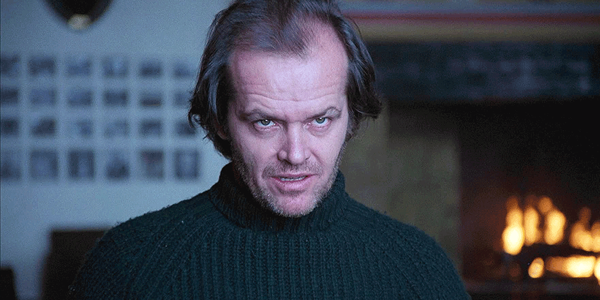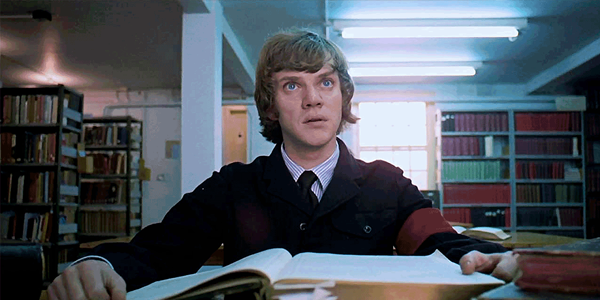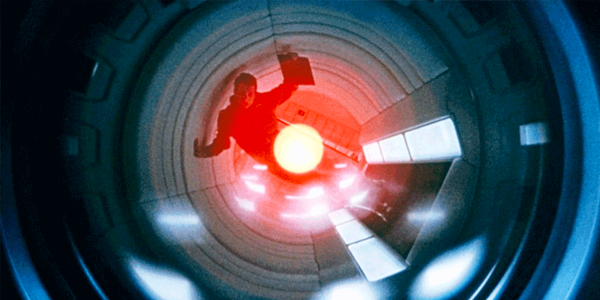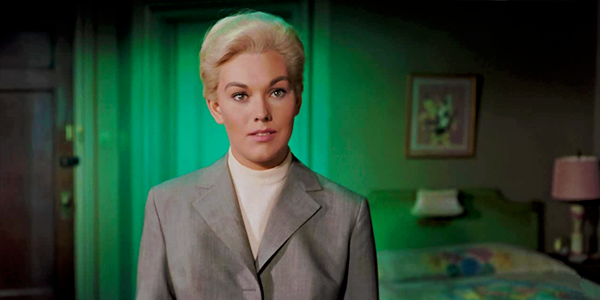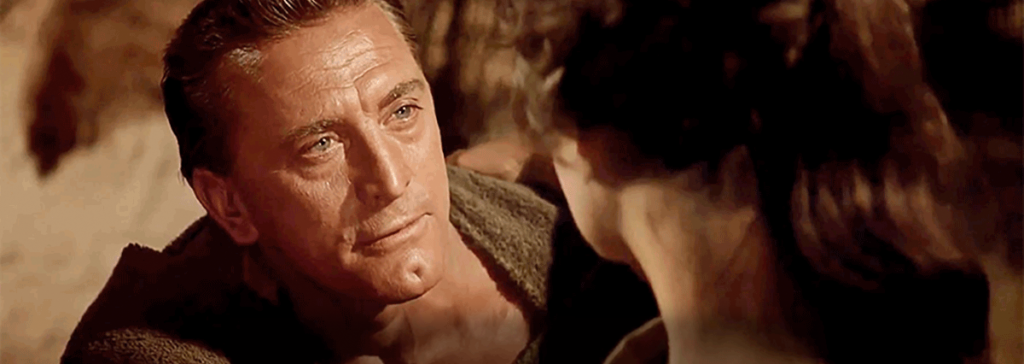
review | Spartacus
This sword & sandal Gladiator precursor proudly struts its stuff via a restoration and 4K HDR transfer
by John Sciacca
October 19, 2020
Of the stable of movie reviewers here at Cineluxe, I’m probably the least qualified to review Stanley Kubrick’s epic historical drama, Spartacus. I certainly don’t possess the encyclopedic film knowledge or ability to dissect filming styles like Mike Gaughn nor have the ability to draw wide parallels and comparisons like Dennis Burger. But what I can bring to this review is a fresh set of eyes and perspective since this was my first viewing. What I can hopefully answer is the question, “Is it worth my time/money to watch Spartacus?”
Doing even the slightest bit of digging into the film reveals it wasn’t the smoothest production. After failing to get the title role in Ben Hur, Kirk Douglas was looking for a major project for his production company, Bryna Productions, and optioned Howard Fast’s novel Spartacus. Fast was initially hired to write the screenplay but was replaced by Dalton Trumbo, who was on the Hollywood blacklist at the time writing screenplays under pseudonyms. Trumbo apparently turned the script around in two weeks and Douglas insisted that Trumbo be given onscreen credit for the film and publicly announced Trumbo as the writer.
Douglas fired the original director, Anthony Mann, after the first week of filming and replaced him with the 30-year-old Stanley Kubrick (who had worked with Douglas on Paths of Glory three years earlier). But this is the only film where Kubrick wasn’t given complete creative control and it included a significantly higher budget—$12 million (equivalent to $105 million today)—and far larger cast than anything he’d worked on befroe. Disagreements persisted throughout the production, based on Kubrick’s shooting style, pacing, the screenplay, and choice of location.
Despite all that, the film was a massive box-office success, receiving seven Academy Award nominations and winning four, including Supporting Actor, Art Direction, Cinematography, and Costume Design.
With a run time of three hours and 17 minutes, watching Spartacus is a significant time investment. While its 1960 opening ran 202 minutes, 41 minutes were trimmed for a 1967 re-release. It received an extensive restoration in 1992, backed by Steven Spielberg, and while the cut footage—including the “infamous” bath scene between Crassus (Laurence Olivier) and Antoninus (Tony Curtis)—was restored, the prints from the premiere were apparently lost and there are two short scenes that no longer exist.
The film was given a major restoration for its 55th anniversary that included creating a new true 4K digital intermediate. A title card at the conclusion notes, “2015 Digital Restoration 6K scan from original large format Technirama Film Elements 4K color correction and digital restoration, 7.1 channel audio by NBCUniversal Studio Post”. The 4K Blu-ray includes a DTS:X soundtrack, while the Kaleidescape version reviewed here features Dolby Atmos.
Born into slavery, Spartacus (Kirk Douglas) is saved from death when purchased by Batiatus (Peter Ustinov), who runs a school that trains gladiators to fight and die “for ladies and gentleman of quality, those who appreciate a fine kill.” While in training, Spartacus meets and falls in love with another slave, Varinia (Jean Simmons). After she is sold, Spartacus leads a revolt and overthrows the soldiers at Batiatus’ camp. The revolt grows into an idea to rise up to free all the slaves of Italy, to create an army of gladiators that could fight their way to freedom to leave Italy forever to return to their homelands. After the slave army conducts a variety of raids on Roman garrisons where they gather treasure and more freed slaves, the Roman Senate enacts a plan to send Legions to crush Spartacus’ army.
Spartacus is classic old-school, epic Hollywood filmmaking. It opens with a four-minute musical overture, followed by another near four minutes of credits, and includes a mid-film intermission with a two-minute Entr’acte. Given its length, there’s plenty of time to develop characters’ stories, appreciate Spartacus’ rise to power and march across Rome, and delve into the political intrigue happening in Rome, though the pacing does feel a bit slow at times.
What drives Spartacus is the performances of the leads. Obviously motivated to turn in a strong performance, Douglas does much of his acting with his eyes, saying more with a stare, glare, squint, or furrowed brow than he does with his mouth. Olivier’s Crassius is a strong foil to Douglas but the star of the show for me was Ustinov, who seems to revel in his role as successful citizen turned sycophant to the Empire, tossing in off-handed comments and jokes that bring a bit of levity to the story, and example of which: “A gladiator is like a stallion that must pampered. Oiled, bathed, shaved, massaged, taught to use your heads.”
Spartacus’ influence on Gladiator is clear, though that later film relies far more on gladiatorial-battle set pieces and the CGI spectacle of recreating the Roman Colosseum. What Spartacus lacks in modern computer trickery it makes up for in sheer numbers, augmenting its cast with eight thousand Spanish soldiers to double as Romans for the climatic battle and doing much of its shooting on location (including California’s Hearst Castle—and anyone who has ever been on the tour will recognize the swimming pool at what is supposed to be Crassis’ estate), which looks fantastic captured in the 35mm Super 70 Technirama format.
The quality of this transfer is apparent before the film even starts, as the title credits are razor-sharp, clean and clear. The opening shots reveal a natural bit of film grain in the blue skies, but images have incredible depth and sharpness, letting you see for miles into the distance. Resolution is impressive, letting you see individual pebbles and stones in the rocky ground, or the frayed edges on the sleeves of the slaves’ tunics, the detail of the embroidery, or the scuffs and wear in leather. The detail lets you know what the fabric of each actor’s costume would feel like, and reveals the quality differences between classes. The resolution also reveals incredible facial detail in closeups, clearly showing every pore, wrinkle, and line in Douglas’ leathery, sunburnt face.
One of the downsides to suddenly revealing everything in a film—especially one that is now 60 years old—is that some of the filming techniques and shortcuts of the day are apparent. For example, there’s an interior scene where it’s obvious the brick and mortar of the walls is just set-dressing façade. It’s also clear when they’re shooting on an interior set rather than on location—and that the groups of Roman soldiers in some long-focus shots aren’t actually groups of soldiers.
Also curious is the filming decision to nearly always defocus the camera when showing Varinia. The sharpness of every other scene makes this especially apparent. This had to have been a creative decision of the day, as Simmons was beautiful and had no apparent skin imperfections. (Though her acting was fine, her casting made me think they really wanted Elizabeth Taylor but instead used the closest substitute they could.)
While the grand battle scene is impressive, I was surprised there weren’t more lengthy shots revealing the entirety of the fighting force. But there are plenty of scenes that show off an innumerable amount of people either marching, preparing for battle, or starting to charge.
The training at Batiatus’ gladiator camp is also impressive. It’s clear the actors are doing their own stunts, some of which required a fair bit of dexterity and stamina, and it appears some people are actually being injured. For example, at the 54-minute mark, Spartacus fights Marcellus (Charles McGraw), and the higher resolution and color reveal that McGraw is actually bleeding from a wound and you see Douglas actually smashing his face into the cooking pot.
This new transfer greatly benefits from the HDR grading, with interior scenes having deep shadow detail and inky, clean blacks. We also enjoy added highlights from sunlight glinting off sweating skin or in burning firelight. Having never seen the film prior, I can’t say for certain but it appears they took a pretty conservative pass with the HDR, and definitely remained true to the film’s original look. The wider color gamut brings out the richness of the crimson of the Roman soldiers and Senators, the gleam of shining gold, the red-orange as villages burn at night, and just a more natural quality to skin tones.
Sonically, it felt like about 90% of the audio came from the front three left, center, and right speakers. If the surrounds were ever employed, it was sparingly, and not in a way that ever caused distraction or drew undue attention. The sweeping score is big and dynamic with its soundstage given a chance to open up across the width of the front speakers with a bit of the strings mixed up into the front height channels for added dimension. The only other time I was aware of any height-channel activity was during a thunderstorm were a bit of the storm is mixed overhead. They also use the subwoofer to bring weight to the musical score and to punctuate some of the battle scenes or marching. Dialogue is kept to the center channel, and it is clear and intelligible throughout.
Spartacus remains a spectacle and triumph of its time, and it’s the kind of massive Hollywood epic we don’t often see any longer. The care and effort that went into this restoration are simply stunning to behold, letting you appreciate details audiences 60 years ago likely missed. Getting back to my opening question, “Is it worth your time/money to watch?” Absolutely.
Probably the most experienced writer on custom installation in the industry, John Sciacca is co-owner of Custom Theater & Audio in Murrells Inlet, South Carolina, & is known for his writing for such publications as Residential Systems and Sound & Vision. Follow him on Twitter at @SciaccaTweets and at johnsciacca.com.
PICTURE | This 4K transfer greatly benefits from the HDR grading, with interior scenes having deep shadow detail and inky, clean blacks, and with added highlights from sunlight glinting off sweating skin or in burning firelight.
SOUND | About 90% of the audio in the Atmos mix comes from the front speakers. Surrounds are employed sparingly and not in a way that ever causes distraction or draws undue attention.
© 2025 Cineluxe LLC


